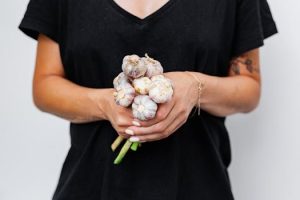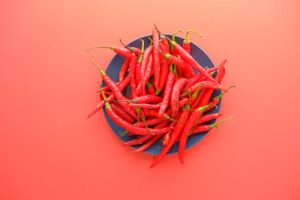Sage perfumes holiday stuffing and roasted meats
The holiday season is finally here, and that means delicious meals and festive traditions. Among the many scents that fill the air during this time, one that stands out is the warm and herbaceous aroma of sage. Not only is it a staple in many holiday dishes, but sage also has a long history of being used in perfumery. This versatile herb adds depth and complexity to many dishes, and it’s no different when it comes to holiday stuffing and roasted meats. In this article, we’ll explore how sage perfumes these holiday classics and why it’s a must-have in your kitchen and fragrance collection.
The Traditional Use of Sage in Holiday Cooking
Sage has been used in cooking for centuries, and it’s no wonder why it’s a go-to spice for holiday meals. Its earthy and slightly peppery flavor pairs perfectly with poultry, pork, and other hearty meats. Its strong and distinct aroma also adds depth to dishes like stuffings, gravies, and sauces.
But what many may not know is that the use of sage in holiday cooking has a historical significance. In the Middle Ages, sage was believed to have healing properties and was used to ward off plagues. It was also associated with prosperity and longevity, making it the perfect herb to incorporate in holiday feasts.
The Aroma of Sage in Perfumery
While sage is commonly known for its culinary uses, it has also been a popular ingredient in perfumes for centuries. Its essential oil, extracted from the leaves of the sage plant, is used as a middle note in many fragrances. Sage’s aroma is often described as warm, woody, and herbaceous, with subtle hints of eucalyptus and camphor. It’s a versatile scent that can add depth and complexity to a fragrance, much like its use in cooking.
In perfumery, sage is often used to create a fresh and natural feel. It’s a popular choice for fragrances that are meant to evoke a sense of the outdoors, such as woody or herbal scents. It’s also known to have some aromatherapy properties, including being uplifting and promoting mental clarity.
How Sage Perfumes Holiday Stuffing and Roasted Meats
When used in holiday stuffing and roasted meats, sage not only adds flavor but also enhances the overall aroma of the dish. Its earthy and slightly peppery notes complement the meat and bring out its natural flavors. When combined with other herbs like thyme, rosemary, and parsley, sage creates a fragrant and delicious stuffing that will have your guests coming back for seconds.
Additionally, the smell of sage permeates the air, creating a warm and welcoming atmosphere. It’s a scent that brings to mind cozy gatherings and cherished memories of holidays past. Its use in meats, whether as a seasoning or in a marinade, also helps to infuse the dish with its fragrant aroma, making it a feast for the senses.
Try These Sage-Infused Holiday Recipes
Ready to incorporate sage into your holiday cooking? Here are two simple and delicious recipes to get you started:
Sage and Onion Stuffing
– 8 cups of cubed bread
– 2 tablespoons of butter
– 1 onion, diced
– 2 garlic cloves, minced
– 1/4 cup of chopped fresh sage
– 1/4 cup of chopped fresh parsley
– 1 cup of chicken or vegetable broth
– Salt and pepper to taste
1. Preheat your oven to 375 degrees F.
2. In a large skillet, melt the butter over medium heat. Add the diced onion and minced garlic, and cook until softened, about 3-4 minutes.
3. Stir in the chopped sage and parsley and cook for another minute.
4. In a large mixing bowl, combine the cubed bread and the sage mixture, and mix well.
5. Slowly pour in the chicken or vegetable broth and mix until the bread is evenly coated and slightly moist.
6. Season with salt and pepper to taste.
7. Transfer the mixture to a greased baking dish and bake for 35-40 minutes, or until the top is golden brown.
8. Serve hot and enjoy the delicious aroma of sage.
Sage Roasted Pork Tenderloin
– 2 pounds of pork tenderloin
– 2 tablespoons of olive oil
– 2 tablespoons of chopped fresh sage
– 2 garlic cloves, minced
– Salt and pepper to taste
1. Preheat your oven to 375 degrees F.
2. In a small mixing bowl, combine the olive oil, chopped sage, minced garlic, and salt and pepper.
3. Rub the mixture all over the pork tenderloin, massaging it into the meat.
4. Place the tenderloin on a greased baking dish and cook for 25-30 minutes, or until the internal temperature reaches 145 degrees F.
5. Let the meat rest for 5 minutes before slicing and serving.
6. Take a deep breath and savor the heavenly aroma of sage.
In Conclusion
Sage may be a small herb, but its impact on holiday cooking and perfumery is immense. Its use in holiday stuffing and roasted meats not only adds flavor but also creates a warm and inviting atmosphere. So this holiday season, make sure to add a pinch of sage to your meals and your fragrance collection for a truly festive and fragrant experience.











